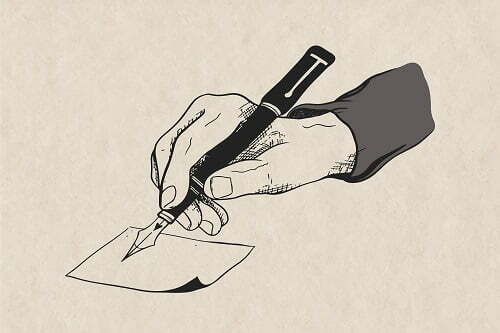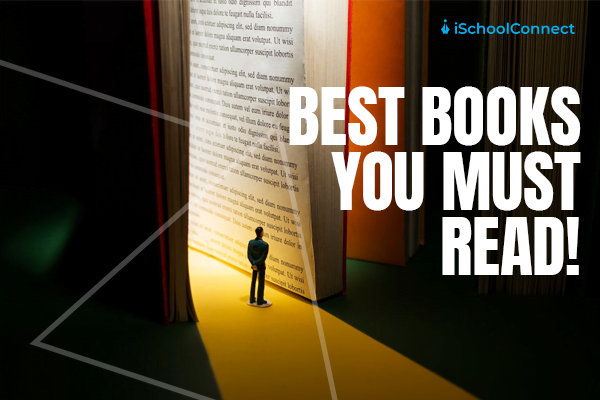Table of Contents
- An ode to your love: Literature!
- 10 books that every literature student should read
- The Great Gatsby, by F. Scott Fitzgerald
- The Picture of Dorian Gray, by Oscar Wilde
- Wuthering Heights, by Emily Brontë
- 1984, by George Orwell
- Great Expectations, by Charles Dickens
- To Kill A Mockingbird, Harper Lee
- Emma, by Jane Austen
- The Lord of the Rings, by J. R. R. Tolkien
- The Catcher in the Rye, by J. D. Salinger
- Alice’s Adventures in Wonderland, by Lewis Carroll
- Bonus literature book suggestions
- FAQs
An ode to your love: Literature!
The world as we know it has been described, commented on, and shaped through literature. There is a multitude of intriguing and nail-biting novels to read out there, ranging from classic love stories and tales of heroism to modern observations on societal developments and apocalyptic scenarios. Choosing which ones to read might be one of the most difficult decisions to make!
First and foremost, you should strive to pursue your passions. If you like a certain author’s work, see if they’ve written anything else. For example, if you liked Thomas Hardy’s Tess of the D’Urbervilles, you might read Far from the Madding Crowd or a collection of Hardy’s poetry.
If you’re more interested in the author’s topics, seek novels with the comparable subject matter. For example, if you appreciated Virginia Woolf’s portrayal of women and mental illness in Mrs. Dalloway, you might read Charlotte Perkins Gilman’s The Yellow Wallpaper.
Obviously, you don’t have to limit yourself to the types of works covered in class, but it’s always a good idea to read a few, as the ‘classics’ had a significant impact on later writers. Add these novels to your reading list, whether you’re a natural English speaker or just starting to learn the language!
10 books that every literature student should read
The Great Gatsby, by F. Scott Fitzgerald
“In my younger and more vulnerable years my father gave me some advice that I’ve been turning over in my mind ever since. ‘Whenever you feel like criticizing any one,’ he told me, ‘just remember that all the people in this world haven’t had the advantages that you’ve had.’”
- The Great Gatsby, first published in 1925, has long been regarded as a classic novel to read, frequently ranking among the greatest works of literature of all time.
- The story follows Jay Gatsby, a man who spends his life going after his one true love, Daisy Buchanan, whom he lost five years before we meet him at the novel’s opening.
- During his pursuit of love, Gatsby experiences numerous highs and lows, including a journey from poverty to fortune, from love to heartbreak, and finally, to catastrophe.
- Fitzgerald’s work, which captures a cross-section of American life at the time, covers issues of class, gender, predictability, victory, and tragedy.
- You will appreciate engaging in in-depth conversations and learning more about the fall of the 1920s, prohibition, and other social concerns of the time, as well as analyzing how Fitzgerald effectively employs recurrent symbols to best portray the characters’ thoughts and feelings in various circumstances.
The Picture of Dorian Gray, by Oscar Wilde
- “Experience is merely the name men gave to their mistakes.”
- The Picture of Dorian Gray, set in late-nineteenth-century London, is a fascinating investigation of class, perspective, and the purpose of art – an essential discussion topic for society at the time.
- When great painter Basil Hallward and his close friend Lord Henry Wotton discuss the subject of Hallward’s latest portrait: a lovely and intriguing young man named Dorian Gray, we meet three significant characters. Lord Henry, impressed by the painting and Dorian Gray’s seeming buoyancy and innocence, asks Hallward if he might meet him.
- Despite his reservations, Hallward introduces Dorian to Lord Henry, who, after a few hours in his company, completely changes his perspective on the world – instead of innocence and appreciation, he learns to perceive life as Lord Henry does, as a series of pleasures unrelated to good and evil.
- A life of thrill-seeking and rash decisions follows, which finally leads to Dorian’s demise.
- The Picture of Dorian Gray provides many intriguing areas of debate, such as the superficial nature of cultures and the detrimental implications that influence may have.
- As such, it is correctly regarded as one of the must-read classics for English Literature students.
Wuthering Heights, by Emily Brontë

- “If all else perished, and he remained, I should continue to be, and if all else remained, and he were annihilated, the universe would turn to a mighty stranger.”
- Wuthering Heights must be included on any list of must-read literature for English Literature students. Indeed, it is not strange if you have previously studied or heard of Emily Bronte’s Wuthering Heights.
- The plot centers around individuals who reside in the isolated farmhouse known as ‘Wuthering Heights,’ which is one of love and vengeance.
- It revolves mainly around Heathcliff, an orphan kid, and Catherine, and both reared on the estate.
- Despite their social status differences, they finally fall in love.
- However, a heartbreaking narrative follows: Catherine marries a wealthy neighbor, Edgar Linton, and Heathcliff flees Wuthering Heights.
- We follow the couple over the years, including some painful family occurrences that drive Heathcliff to seek vengeance on those who wrecked his and Catherine’s childhood passion.
1984, by George Orwell
- “Don’t you see that the whole aim of Newspeak is to narrow the range of thought? In the end we shall make thoughtcrime impossible, because there will be no words in which to express it.”
- 1984 will always be regarded as one of the top books for English Literature students to read during their education, regardless of who you ask.
- It explores issues of authoritarianism, tyranny, and mass media domination, providing lots of topics for discussion and debate.
- This dystopian novel is regarded as one of the finest works of art by writer George Orwell, also known for Animal Farm.
- The story follows Winston Smith, a low-ranking member of ‘the Party,’ a new social organization ignored by the dictator ‘Big Brother.’
- In this classic, we learn that ‘Big Brother’ has complete control over people’s lives.
- Cameras circulate to watch the occupants’ every move, from picking what they read, speak, say, and do.
- The language ‘Newspeak’ is designed to entirely abolish any potential of political rebellion, while ‘Thoughtcrimes’ prevent individuals from even thinking about things deemed rebellious.
Great Expectations, by Charles Dickens
- “Suffering has been stronger than all other teaching, and has taught me to understand what your heart used to be. I have been bent and broken, but – I hope – into a better shape.”
- Thanks to its wit, beautifully constructed language, and original narratives, Charles Dickens’s Great Expectations has to be featured on our list of classic novels to read as one of the finest coming-of-age stories ever written.
- The plot revolves around Pip, an orphan who learns an important life lesson when a significant change in riches is bestowed upon him by an unknown benefactor.
- What follows, however, is a story about learning and comprehending our morals.
- Pip pushes away all who have ever loved him in his greed and selfishness, losing touch with the guy he once was.
- Along the journey, he encounters a slew of colorful individuals, including the eccentric Miss Havisham, an elderly lady who was abandoned at the altar many years ago and refused to let go of the past.
- Dickens portrays a vision of her wedding cake, which still stands on the table, moldy, but encourages us to consider how our actions affect others in a sad but meaningful message.
To Kill A Mockingbird, Harper Lee
- “You never really understand a person until you consider things from his point of view … Until you climb inside of his skin and walk around in it.”
- To Kill a Mockingbird is set in the 1930s in the small and peaceful town of Maycomb, Alabama, and is narrated by Scout Finch, a six-year-old tomboy who lives with her ten-year-old brother, Jem, and her father, Atticus, a local lawyer.
- We follow a case Atticus is working on to prove the innocence of a black man who has been wrongfully convicted of a crime he hasn’t committed. At the same time, we explore complicated subjects like civil rights and racism in the segregated southern United States in the early twentieth century.
- We also look at established class and gender norms through Scout’s eyes and how they impact our judgment in our daily lives.
Emma, by Jane Austen

- “Nobody, who has not been in the interior of a family, can say what the difficulties of any individual of that family may be.”
- Emma is a great place to start if you’ve never read a Jane Austen novel before. It’s amusing, romantic, and easy to read.
- The story is set in the early nineteenth century.
- It follows Emma Woodhouse, a clever young woman whose overconfidence in her ability to matchmake others leads to various love disasters of her own.
- The blockbuster cinematic adaptation of Jane Austen’s Emma is set to hit theaters in 2020.
- However, Emma has long been argued as Jane Austen’s finest work and has rightfully earned its place on the list of classic books to read for literature students.
- Other adaptations include Gwyneth Paltrow’s Emma and the 1995 film Clueless, which revolves around the lives of the “handsome, bright, and affluent,” with the modernized lead character Cher Horowitz playing matchmaker at her high school.
The Lord of the Rings, by J. R. R. Tolkien
- “The board is set; the pieces are moving. We finally come to it, the great battle of our time.”
- J. R. R. Tolkien attended Exeter College in Oxford and was a founding member of “The Inklings,” a prominent group of aspiring writers, including C. S. Lewis, who gathered for talk, beverages, and readings from their works-in-progress.
- Taking inspiration from his tremendous circle of pals, his writings have earned him international acclaim and have been regarded as one of the greatest authors of all time.
- His best-known work is The Lord of the Rings, a series of volumes. Have you read the series? Then you’ve almost definitely seen or heard something about the epic three-part film adaptation of Tolkien’s original writings.
The Catcher in the Rye, by J. D. Salinger
- “What knocks me out is a book that, when you’re all done reading it, you wish the author that wrote it was a terrific friend of yours, and you could call him up on the phone whenever you felt like it. That doesn’t happen much, though.”
- This coming-of-age tale is a classic book featured on many UK GCSE and A-Level syllabi.
- Written by J.D. Salinger in 1950, the novel – which is set in the same decade – follows the life of Holden Caulfield.
- We don’t learn much about them other than that he is undergoing mental health treatment in a hospital, which we have quickly shied away from as he recounts a previous tale.
- The events Holden narrates are about his sixteen-year-old self, after recently being expelled from Pencey Prep, a private school in the USA, for fighting with his roommate, Stradlater.
- Illustrating the emotional turbulence of ‘growing up,’ Holden chooses to spend two days exploring New York before he returns home to his parents and admits to his expulsion.
- During this time, he meets and interacts with people of all different backgrounds; teachers, nuns, an old girlfriend, and even his sister along the way. The story ends with Holden about to return home.
- He leaves the story here as he doesn’t want to recount how he got ‘sick.’ Instead, we end with Holden’s optimistic outlook on the prospect of starting a new school in the autumn and looking at opportunities.
Alice’s Adventures in Wonderland, by Lewis Carroll
- “It’s no use going back to yesterday because I was a different person then.”
- Lewis Carroll’s Alice’s Adventures in Wonderland is a timeless children’s classic and a must-read for any English Literature student.
- At over 150 years old, the tale has stood the test of time and become a much-loved staple of British literature.
- For those unfamiliar with the title, the charming tale of Alice’s Adventures in Wonderland begins on an ordinary summer afternoon when Alice tumbles down a hole and begins an extraordinary adventure.
- What follows is a strange world with even more eccentric characters; on her journey, she meets a rabbit with a pocket watch, attends a Mad Hatter’s Tea Party, and even plays croquet with the Queen!
- Alice finds her curiosity leading to even more discoveries before waking up dazed and confused, only to discover she has returned home happy with her family.
- The novel is inspired by Alice Liddell, the daughter of the Dean of Christ Church in Oxford in the 1860s.
- It was here that Carroll both studied and worked as a mathematician in Oxford, where he spent much of his life dedicated to research and teaching.
- His passion for sharing and adapting theory for students can be traced in the novel, where numbers and complex riddles dominate much of the complexity of the text.
- It’s a profoundly unique and exciting read and demonstrates the fantastical craft of another Oxford writer.
Read more: Why Students Abandon Applications
Bonus literature book suggestions
Here are some more book recommendations to satisfy your literary thirst-
- Little Women, by Louisa May Alcott
- The Wind in the Willows, by Kenneth Grahame
- Brideshead Revisited, by Evelyn Waugh
- Treasure Island, by Robert Louis Stevenson
- Lord of the Flies, by William Golding
- To the Lighthouse, by Virginia Woolf
- The Grapes of Wrath, by John Steinbeck
- Frankenstein, by Mary Shelley
- His Dark Materials, by Philip Pullman
- The Kite Runner, by Khaled Hosseini
FAQs
Q1. Why is literature so hard?
Answer – Literature deals with things rarely discussed in everyday life. Something that is not as clear as the stuff we convey in pragmatic speech. These are often experiences that are fundamentally human and thus complex.
Q2. How do you read literature properly?
Answer – Discussing literature means you’re thinking about it, which is a vital step towards understanding it. Interact with the story. Ask yourself what you would do if you were in the same position as a character in the text. Try to put yourself in their place and question the character’s thoughts, actions, and motivations.
Q3. What is the best literature to read?
Answer – Here are the six best literature books to read-
- Little Women, by Louisa May Alcott
- The Wind in the Willows, by Kenneth Grahame
- Brideshead Revisited, by Evelyn Waugh
- Treasure Island, by Robert Louis Stevenson
- Lord of the Flies, by William Golding
- To the Lighthouse, by Virginia Woolf






